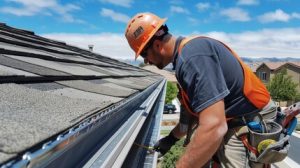If you’re an antiques enthusiast, there’s never been a better time to shop. From a boom in online vendors to new ways to experience the old, today’s collectors have more options than ever.
From vintage jewelry to decorative tin signs, you can be sure Antiquariato Roma can help you connect with the past. Read on to discover what you need to know before starting your collection!

Reputable Dealers
When shopping for antiques, look for dealers who have high standards for sourcing their inventory. This includes being transparent about their inventory and pricing, as well as being able to provide documentation of authenticity when requested. They should also be able to answer any questions quickly and clearly. Lastly, it is important to shop for items in bulk rather than individual pieces, as this typically gets you a cheaper price per item.
Whether you’re interested in art, furniture, or decorative objects, there are plenty of options available to explore in the city. From upscale boutiques to local flea markets, these antique stores and marketplaces offer a variety of treasures for all tastes.
You can check one of the city’s top spots for collectors, curators, and decorators to find unique home furnishings and art pieces. With a storefront that spans 5,000 square feet, the gallery features a revolving display of historic and contemporary works of art.
Aside from the gallery, there is also a large space in the store that houses a range of antiques and home goods. From decorative globes to wicker picnic baskets, there is something for everyone here. The shop is also known for its extensive selection of antique maps, a perfect gift for any history buff or travel enthusiast.
Another great option for finding antiques is the flea market. Located in a former strawberry barn, the storefront is filled to the brim with vintage goodies from around the world. From mid-century modern tables to vintage electronics, this is a great place to find one-of-a-kind antiques.
Besides selling to a local antique dealer, another way to maximize your return is by turning your antiques into cash. This is possible through pawn shops and other online marketplaces, but it’s essential to find buyers who understand the value of your antiques. In addition, it’s a good idea to get your items appraised by a professional to assess their authenticity and value accurately.
With sentimental and monetary value, it’s easy to see why antiques are so highly sought after by collectors and enthusiasts alike. Whether you’re interested in vintage jewelry, rare coins, or classic furniture, it is crucial to choose the right dealers to ensure you’re getting a fair price and a seamless selling experience.
Expertise
When it comes to antiques, you want a dealer who knows what they’re talking about. They’re the ones who have spent decades focusing on certain styles and becoming an authority in that area. They’ll have a deep understanding of the craftsmanship that went into a piece, the story behind it, and how people used it over the years. They should also be able to give you a fair and accurate appraisal of an item that you’re interested in purchasing.
While some dealers focus on a specific time period or style, others are more eclectic and are constantly on the lookout for rare items. One such dealer is a unique antique shop that specializes in finding old plumbing and lighting fixtures, regal mantels, and religious pieces. Their experts say that eclecticism is a growing trend in interior design, where homeowners and designers are using a variety of antiques to create an interesting ambiance in their homes.
A key part of their business is customer service. They work hard to keep their prices reasonable, believing that it benefits both themselves and the buyers. They also take great care to preserve their pieces, avoiding over-restoration to maintain the originality of each item. They take pride in their collection, and they’re always on the lookout for the next interesting find. For example, they recently came across a Regency-period silk thread box that was still intact with the silk threads inside.
Many antique dealers belong to trade associations, such as the American Society of Appraisers (ASA) and the National Antiques Dealers Association (NAD). These organizations have stringent requirements that dealers must meet, including a background check and adherence to ethics. Membership in these associations provides additional protection for consumers, and it gives buyers a better chance of resolving any disputes with the dealer.
Authenticity
Authenticity is an essential concept to understand when collecting antiques. A piece’s authenticity determines its value, and recognizing signs of reproduction or fabrication can help collectors avoid purchasing poorly made items. This process involves examining construction methods, natural aging, and unique details that set antiques apart from contemporary pieces. It’s also important to seek multiple expert opinions when assessing the authenticity of a vintage item.
For instance, a weathered map that once guided explorers to undiscovered places might hold real value for a collector. Similarly, a vintage dress or antique jewelry can add character to a modern wardrobe, while a vintage clock can bring life and history to a room. To determine the authenticity of a piece, look for identifying marks that show a specific maker or era.
Another way to verify the authenticity of a piece is through provenance. This can be documented through sales receipts, records of ownership, or certificates that establish the item’s history. Authenticity is especially important when it comes to antique furniture. It’s crucial to recognize signs of modern manufacturing or artificial aging, such as distressed finishes that look too uniform or perfect. In addition, a quality antique will have a unique style and color that sets it apart from modern furniture.
When assessing the authenticity of jewelry, look for intricate engravings and superior craftsmanship that reflect its era. Antique rings, bracelets, and necklaces should be free of blemishes or repairs, and their wear should show naturally on the surface. Additionally, examine jewelry for signs of restoration or over-cleaning, which can diminish value and detract from a piece’s aesthetic.
A resurgence in interest in mid-century modern design has driven a revival of ceramics, and genuine Blue Willow china and other classic ceramics from the 1950s and 1960s will increase in value. Examine the craftsmanship of a vase to ensure it is well-made, and look for recognizable makers like McCoy and Roseville.
Whether you’re an avid collector or just starting, it’s important to find a trusted dealer that specializes in the type of collectible you’re looking for. They can provide you with detailed information about an item’s history and help you make informed decisions about your collection.
Restoration
A designer bag, a pair of couture shoes, or an antique heirloom ring are more than fashion indulgences; they represent taste and sophistication that have stood the test of time. Preserving the elegance of these luxury accessories requires a delicate balance of care and respect. By cleaning gently, storing wisely, maintaining structure, and seeking professional restoration, these pieces can remain flawless and timeless for generations to come.
Achieving this balance is a complex task, and every restorer must develop a profound respect for the original piece. This respect translates into a dedication to preserving as much of the historical integrity of an artifact as possible. This often involves using reversible techniques and establishing an understanding of how the piece was created. Additionally, modern technology plays a crucial role in the restoration process. Techniques like 3D scanning and chemical analysis help restorers uncover details that may otherwise go unnoticed, allowing them to make informed restoration decisions.
Beyond the practical aspects of restoration, it also carries a unique sense of personal satisfaction. A restored antique can feel like a family heirloom, connecting us with the lives of our ancestors and their struggles, triumphs, and traditions. It can also be a way to understand the history of craftsmanship, gaining insights into the tools and materials used over the years. Most importantly, restoration is a dialogue with history, ensuring that our collective heritage continues to speak to future generations.








